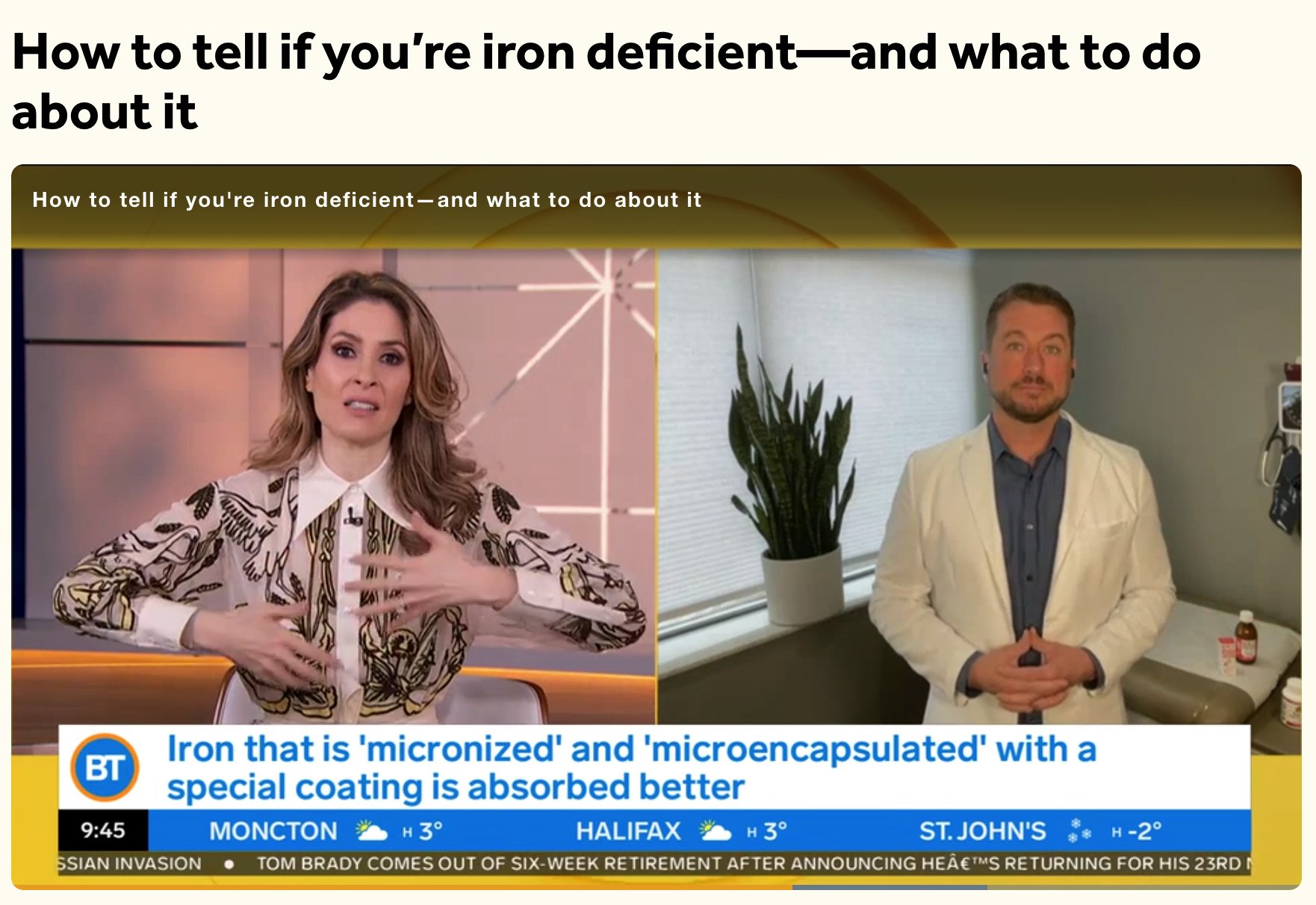The backstory:
We all depend on iron to produce hemoglobin, which transports oxygen throughout the body. Iron is also essential for running our metabolism, and for normal cognitive development in children.
We should be getting 20mg of elemental iron from our diet but latest data show most of us only get 8mg, which is not nearly enough. Iron is the world’s number one nutrient deficiency. It’s estimated that 25% of the world’s population is anemic (anemia is the Greek word meaning lack of blood), and iron deficiency is the most common cause.
Who is most at risk?
- Menstrual females (due to monthly blood loss)
- Babies born to moms with low iron
- Vegetarians and vegans because it’s hard to absorb iron from plants
- Athletes
- Kids because they are growing fast and tend to be picky eaters
- Elderly
What are some signs I, or my child, might be low in iron?
Signs of iron deficiency anemia include dark undereye circles, constipation, diarrhea, fatigue, always feeling cold, inability to exercise because of low stamina, having trouble focusing and skin that looks more pale than usual. Someone who is anemic may also experience brittle nails and hair loss. Heavy periods can cause anemia but paradoxically anemia also causes heavy periods so it can become a vicious cycle.
Children with low iron may have trouble sleeping and wake up in a bad mood. Iron deficiency may also lead to ADHD symptoms, impaired brain development, and stunted growth/short stature.
To check for low iron levels, your doctor may order a serum ferritin blood test, which reflects the amount of stored iron in the body. It’s important to maintain healthy iron levels, because iron deficiency is associated with heart problems, premature births and low birth rate, growth problems in children as well as a less-than-adequate immune system.
Natural strategies for maintaining healthy iron levels:
- Eat iron-rich foods. There are two types of dietary iron: heme and non-heme. Heme iron, found in meat-based proteins such as ground beef, chicken livers, oysters and clams, absorbs two to three times faster than non-heme iron, which is found in plant-based foods including beans, sprouts, dried fruits and fortified cereals.
- Avoid tea, coffee or dairy a few hours before a meal that’s high in iron. The tannins found in tea and coffee interfere with iron absorption. It is important to take iron away from dairy products because dairy reduces absorption of iron.
- Combine iron-rich foods with vitamin C-rich foods. Consuming red bell peppers with spinach, citrus fruits with edamame or tomatoes with broccoli will help speed the absorption of iron traveling from your digestive system into your bloodstream up to five times faster for a major energy boost.
What you need to know about iron supplements!
You may think that any iron supplement can help maintain healthy iron levels. But here’s where it gets tricky. In addition to an unappealing metallic taste, some iron supplements can cause constipation and other digestive upsets. Even more frustrating, you may not be getting as much iron as you think because iron supplements are notoriously not very easily absorbed by the body, especially among children.
When it comes to iron, the type of iron is far more important than whether it’s in a liquid, pill, beverage or food. You want an iron that is protected and delivered where we want it so that it offers the highest absorption, bioavailability and tolerability as possible. SunActive Fe delivers iron pyrophosphate to the lower intestine where it is absorbed. It is highly bioavailable while being easy on the stomach, meaning you’re unlikely to experience the typical constipation and gastrointestinal irritation found with other forms of iron. Additionally, it won’t stain your teeth gray like other forms and has no metallic taste.
SunActive Fe (ferric pyrophosphate) is recommended by the World Health Organization and is identified by the European Food Safety Authority as a source of iron in its approved health claims. Backed by a substantial body of research, SunActive Fe has been shown to reduce the incidence of iron deficiency anemia in children. (That’s especially important because many iron-rich foods such as Swiss chard, beet greens and prune juice aren’t very kid-friendly.)
And lastly, if you have a cast-iron skillet, use it to rev up your iron intake! Tomato sauce and other acidic foods with high moisture content absorb the most iron from these cooking pans.
